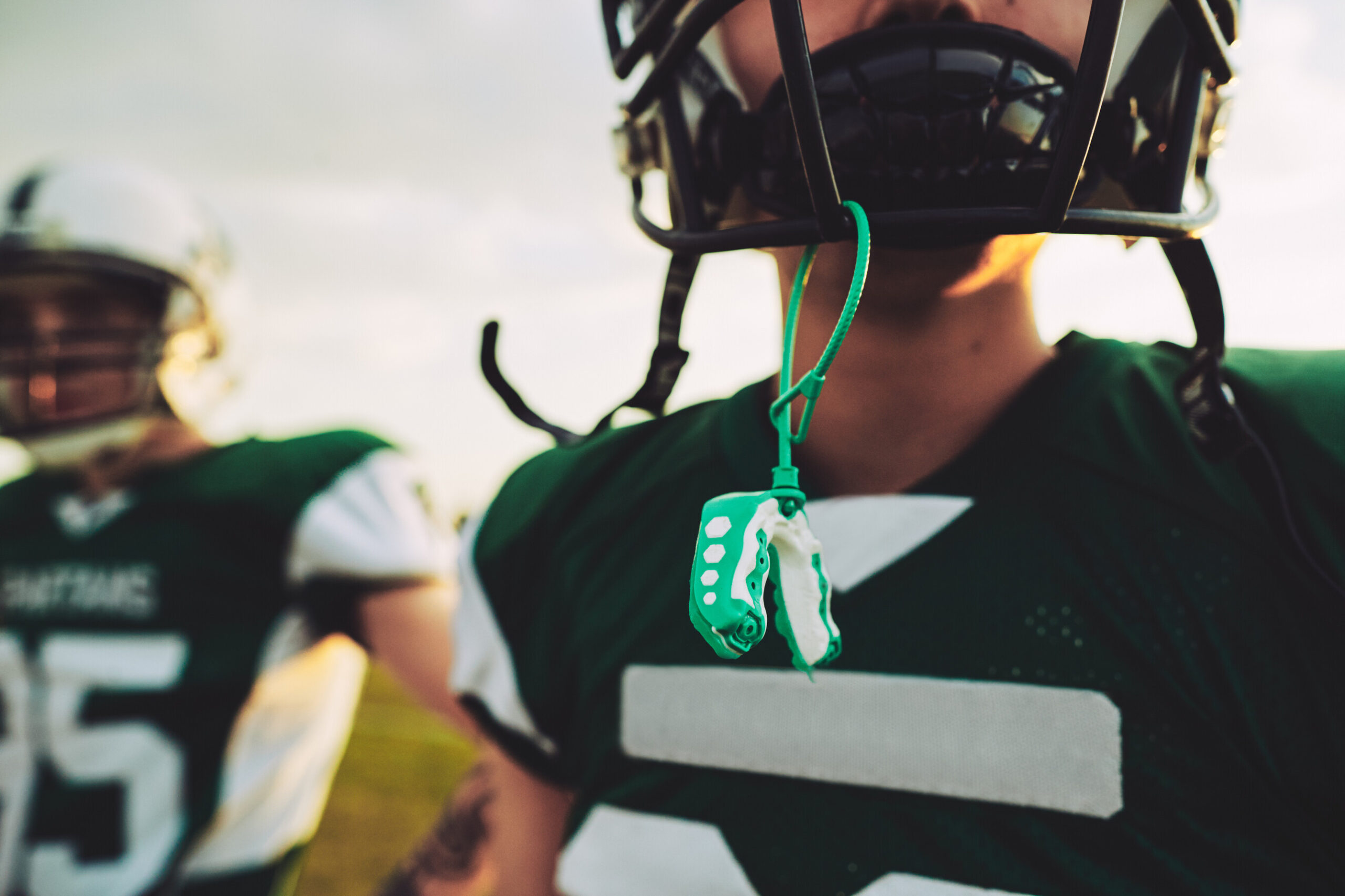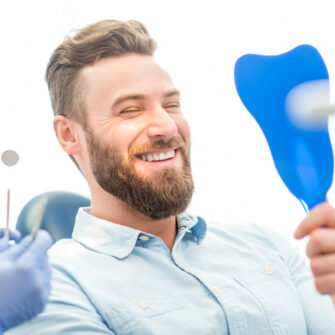In a harrowing series of events during an NBA game between the Chicago Bulls and the Portland Trail Blazers, the Bulls made headlines once again for a player damaging their teeth during play. During the tough-fought match, Bulls player Andre Drummond took an elbow to the face. The result was a chipped tooth requiring immediate medical attention. This isn’t an isolated occurrence. The news has covered several stories about various athletes losing or damaging their teeth while playing sports due to inadequate protection. Even more concerning is a study published by the American Dental Association, which showed that adults who chose not to wear mouthguards when playing sports were at an 82% to 93% greater risk of suffering dentofacial injuries, including chipped, broken, and missing teeth.
In early 2017, the American Association of Orthodontists (AAO) conducted an independent survey* that delivered a clear message: 99 percent of parents whose children play organized sports believed that youth should be required to wear mouthguards while playing. Yet 37 percent of parents said their child never wears a mouthguard while playing sports. This includes games, practices, and recreational play.
“While most parents support the concept of their children wearing mouthguards to protect their smiles, the reality is that many teeth are knocked out each year due to sports-related injuries,” says Nahid Maleki, DDS, MS, Past President of the American Association of Orthodontists (AAO).
This is an alarming trend. Athletes, especially athletes undergoing orthodontic treatment, need to protect their mouths against the bumps, blows, and general roughhousing that come with athletic activities. That’s why in this article, the experts at AAO are taking a bite out of sports injuries and discussing why mouthguards are so incredibly important.
What is a Mouthguard?
A mouthguard is a specialized dental appliance made of plastic that covers your teeth and extends outward to protect your cheeks as well. The primary purpose of a mouthguard is to form a barrier between your teeth and any object that might collide with them during sports activities. They are designed to prevent mouth injuries and reduce the risk of losing or chipping teeth while playing sports.
Mouthguards need to be tight over your teeth. While many mouthguards can be fitted at home, it is always recommended to have your orthodontist take a mold of your mouth to ensure the best, most protective fit, especially if you are undergoing orthodontic treatment.
The Costs of Sports-Related Tooth Injuries
A mouthguard is one of the most inexpensive pieces of protective gear available to young athletes, especially when compared to the high cost of restoring a knocked-out or broken tooth. According to a Sports Health study, parents estimate that it would cost $1,142 to replace a damaged permanent tooth; however, in reality, the costs to treat one knocked-out tooth over a lifetime can range from $5,000 to $20,000. Parents and patients often don’t realize that restorations may need to be repeated periodically, which can amplify repair or replacement costs.
But monetary costs aren’t the only thing you’ll pay for sports-related tooth injuries. A lost tooth or mouth injury can damage your smile and even alter your bite. It can also damage your orthodontic appliances. This can significantly delay your orthodontic treatment, requiring more extended time to straighten your teeth, or even a change in treatment plan if the damage is severe enough.
When Should You Wear Mouthguards?
As a general rule, mouthguards should be worn for most sports activities. The study revealed misconceptions about which sports pose a significant risk to the mouth. Most parents want mouthguards to be required for football (83 percent) and hockey (76 percent), sports that have long been associated with injuries. However, less than half of parents (49 percent) want mouthguards to be required for basketball. A 2007 study published in the Journal of the American Dental Association ranked basketball as the sport at the top of the list for the highest rate of dental injuries for both men’s and women’s intercollegiate athletes.
In fact, just 40 percent of parents believe injuries to children’s mouths are most likely to occur while playing basketball, and only 35 percent think they will happen while playing baseball. A lack of knowledge about mouth injuries could affect how organizations or schools approach mouthguard use by young athletes. In reality, and according to mouthguard manufacturer Shock Doctor, one in four injuries on the basketball court occurs above the neck.
“What we learned from this survey is that some parents forget, or are simply unaware, that sharp elbows or a baseball to the mouth can cause serious damage,” says Dr. Maleki. “The AAO encourages all players to wear a mouthguard – no matter the sport.” Oral injuries can happen during high-risk contact and collision sports, as well as other activities such as gymnastics or skating.
And it’s not just negligence during games; the recommendation extends to sports practices as well. Forty percent of parents reported that their child’s sports practices are less structured than games, and generally have few or no medical personnel nearby. Parents also stated that they believe players are more likely to “showboat” during practice than at a game, which increases the risk of injury.
Frequently Asked Questions About Mouthguards
Get Mouthguards at AAO
Athletes often underestimate oral health risks—mouthguards are essential. Not only do they prevent the unnecessary loss of teeth during play, but they also protect the overall health of your mouth. Additionally, for players undergoing orthodontic treatment, mouthguards are non-negotiable. They protect not only the appliances but also prevent further injury that wires and brackets can cause to the inside of the mouth.
We offer custom mouthguards specifically designed to protect the mouths of our patients. Use our Find an Orthodontist tool and schedule an appointment to get a custom-fitted mouthguard today!
*The American Association of Orthodontists commissioned Wakefield Research to conduct the 2017 AAO Sports Survey among 1,000 U.S. parents whose children play organized sports. The survey was conducted in January 2017 using an email invitation and an online survey. The overall sampling error rate for this survey is +/- 3.1 percent at the 95 percent level of confidence.
**Sports Health, “Common Dental Injury Management in Athletes,” vol. 7, no. 3, May-June 2015, p. 250.
***National Institute of Health, Int J Environ Res Public Health. 2020 Jun 22;17(12):4493



